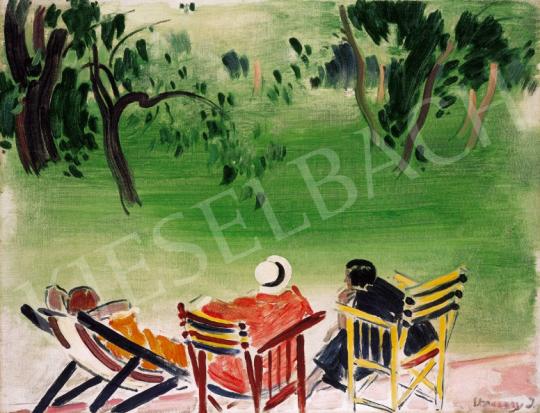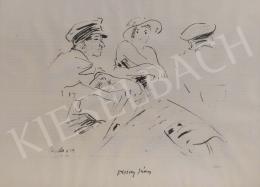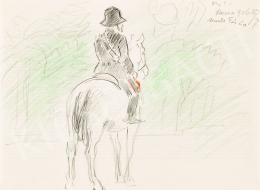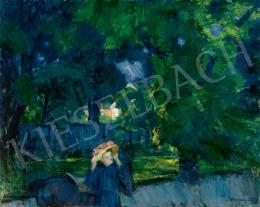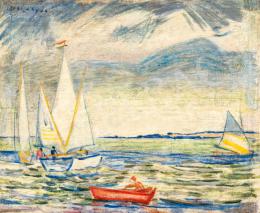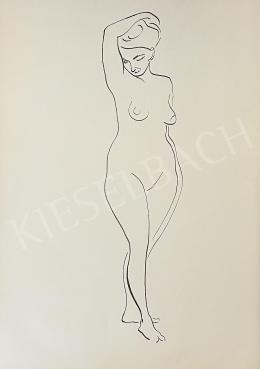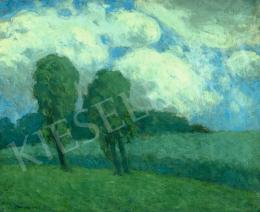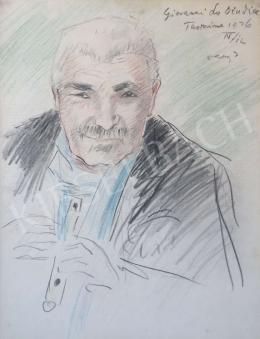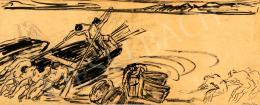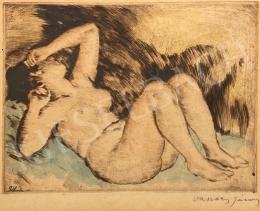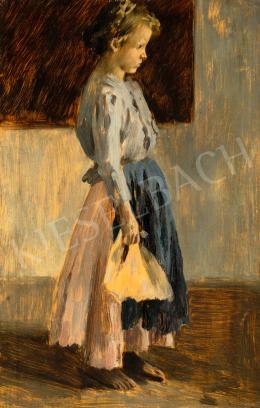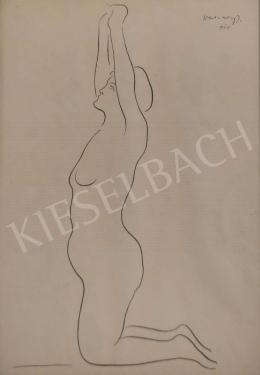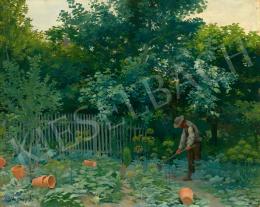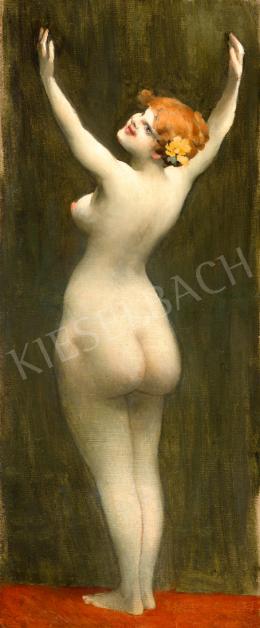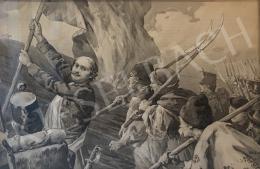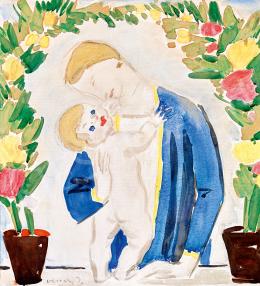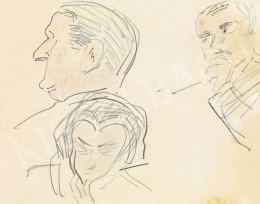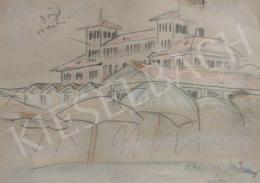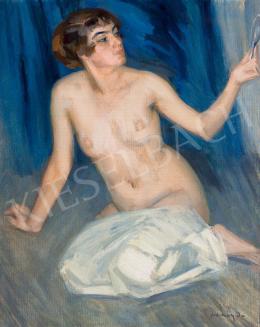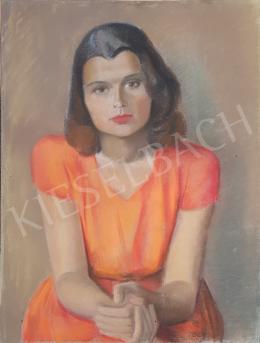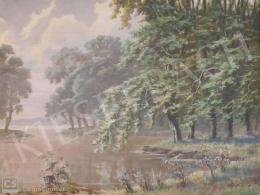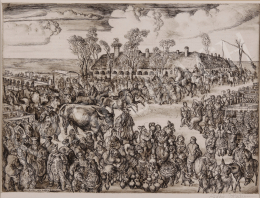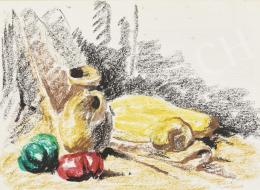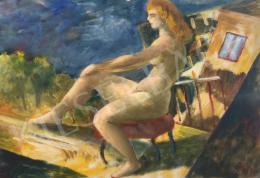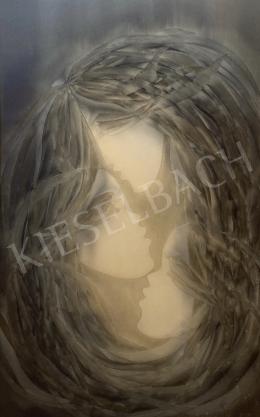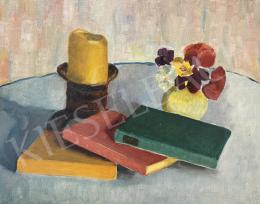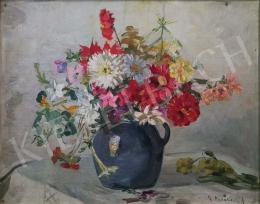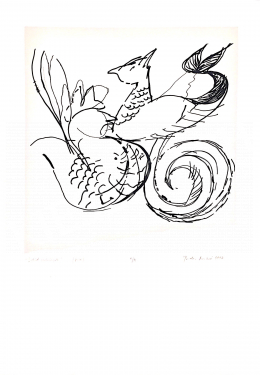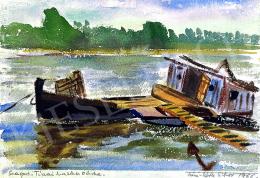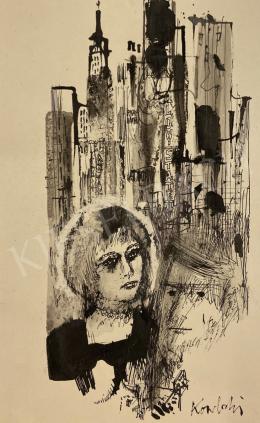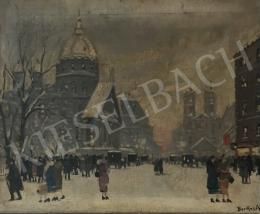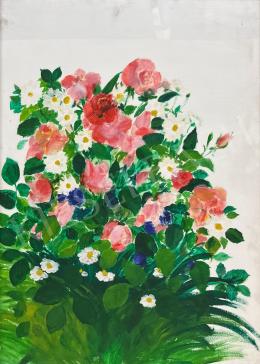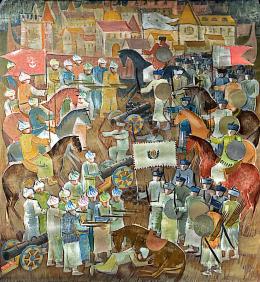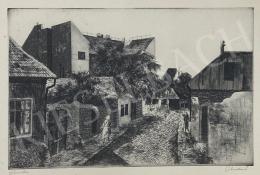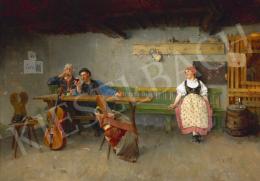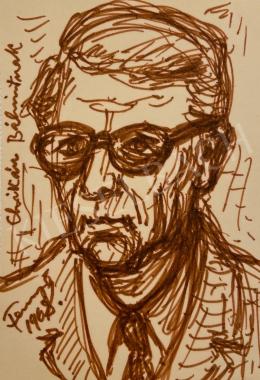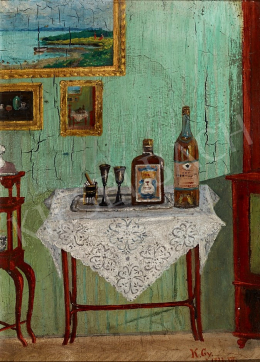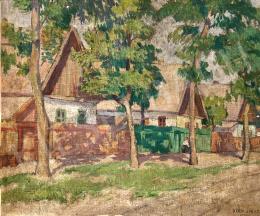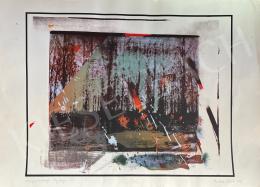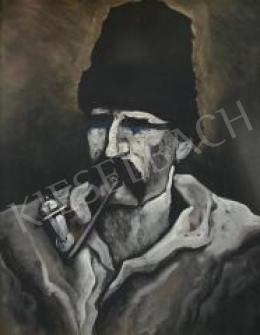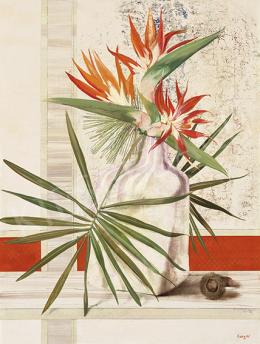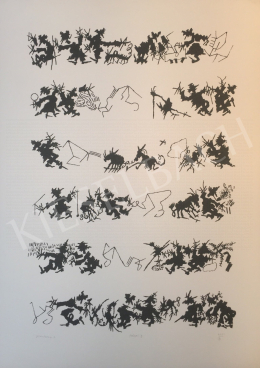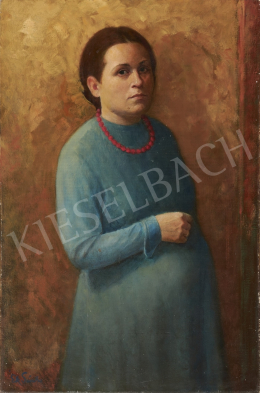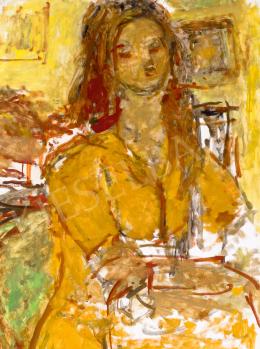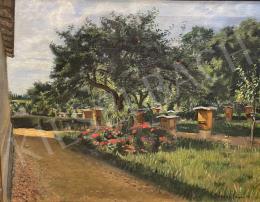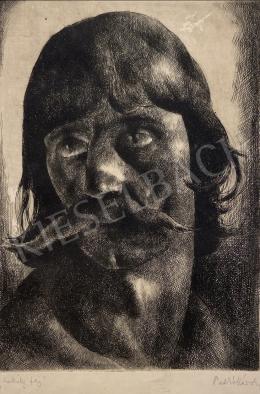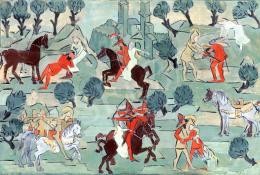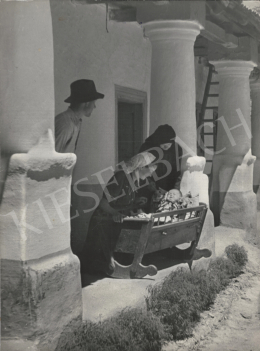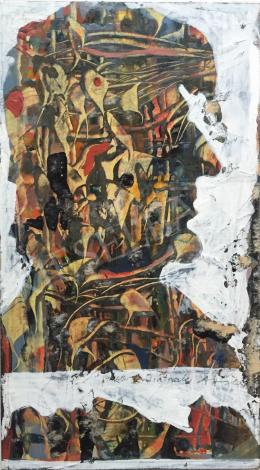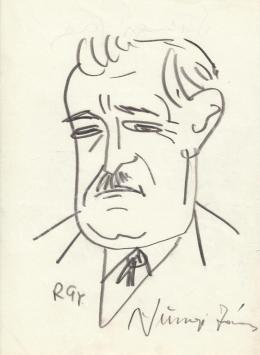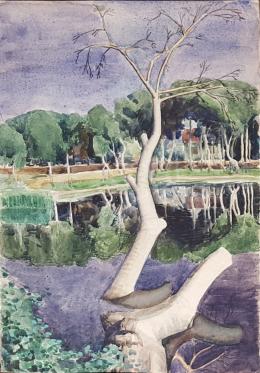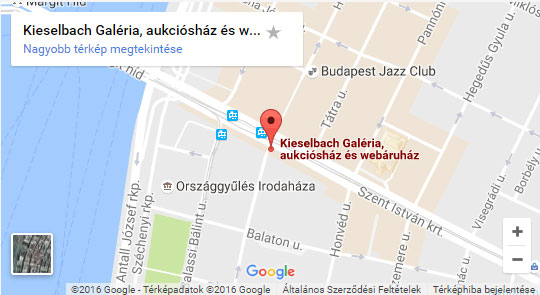Exhibited:
BÁV Auction 48. May, 1979, Lot 314
Reproduced:
BÁV Auction 48, May 1979.Catalogue pic.314.
Literature:
Lázár, Béla: Vaszary János. Budapest, 1923.
Bálint, Jenő: Vaszary János művészete. Budapest, 1927.
Haulish, Lenke: Vaszary János. Budapest, 1978.
Haulish, Lenke: Vaszary 1867-1939. Budapest, 1978.
The picture presented here is Vaszary's most well-known and popular picture. Its success is proved by the fact that the painter made more versions of it. This method of work was popular among artists all through the history of art; from Leonardo to Matisse, from István Csók to Vilmos Aba-Novák, several painters created a version of an important and successful piece - sometimes only years later. The original of the In the Park can be found in the Hungarian National Gallery, though that picture has suffered permanent damage; it has lost its bright colors, probably as a result of a careless restoration. The picture discussed here, however, is in a perfect condition and is able to inform the viewer about the painter's original conception.
The variety of Vaszary's pictures and the intranquility of his artistic character are often leading motifs of the studies on his art. Examining his pictures, the periods of the oeuvre, which carried radically different marks of forming but a permanent quality as well, can be clearly differentiated. The picture presented here is a piece of his last, mature period, which the critics named after the white surfacing he applied at that time.
At the beginning of 1925, after a long pause, Vaszary got to Paris again, and his experiences of that time had a great influence on his following periods. His spirit was captured again by the French painting of that period, by the École de Paris, its light, unbound and elegant form of expression; but the influence of the ebullient, inimitable mood he found in Paris was perhaps even more determinant. After his return he wrote as follows: 'I recognized the French culture as having essential importance. The lightness and directness of the expression, the definite realization of the painter's territory, the light palette, the ceaseless procession of original talents, the continuously pulsating, ebullient art life
and to it the magnificent artistic past that is still able to act as a living force: all these things proved to be such an immense suggestion that lasts all through one's life.' The French lightness remained one of the most important, most characteristic features of his art. On the other hand, his stay in Paris brought changes not only in his style but also in his choice of topic. The representation of the life of a carnal, teeming city of the interwar period was elaborated on a most high standard in his pictures; he painted the streets and squares of Budapest, its cafés and halls, the people walking under the trees of the Promenade. However, as the presented picture shows, besides representing pulsating movement and vibrant cavalcade, he was able to catch the moments of a peaceful, calm retreat.
The picture bears all the signs of the change of style that characterized his art after his return from Paris. The spontaneous, brief catching of sight is coupled with a virtuous gracefulness and elegant generosity of forming. The composition of the picture, its falling into three pieces goes perfectly with the topic suggesting motionlessness and calm. The upper zone representing the trees of the park is melodiously bent, the weightless brushstrokes evoke the sense of a noiseless floating. Vaszary dropped the method of forming with tonality; the parts found unnecessary are melting into the undivided, intensive stains of colors. As a result of Vaszary's exceptional ability of representing characters, the viewer cannot feel the lack of the additional characterization of the figures and the environment despite the fact that the painter dropped spatial modeling and introduced permanent stylization. The clothes, hairdos and the hat, which is the central element of the painting, give a full and expressive picture of the carnal fashion of the 1930s; they are apt attributes of the ladies of the upper middle class of the period.
Vaszary's severe, clean style, which works only with few means, evokes the ease of Japanese wood-prints. Several marks talk about the influence of the art of East: the mood and object of representation, the formal marks, the lack of tonality and the elegant, fine artistic devices, which, so to say, depict us the dynamic movement of the hand holding the brush. The Japanese masters taught the European artists to find beauty worth representing even in the most peaceful, seemingly unimportant moments of life. Vaszary's picture also represents peacefulness formed by inner forces. The harmony of being together with someone is emerging from a soft, human landscape where the distance is bordered and the characters are embraced by the familiar setting of Nature. The picture suggests that it is possible find joy in peacefulness; it suggests the warmth of a company instead of loneliness, contemplation instead of acting. The landscape is tamed into a park, a garden which is embracing as a woman's arm. The fact that Vaszary put three women figures in front of the trees of the park is quite meaningful: all the characteristics of his style - the sensuous way of using colors, the light, airy conduct, the mood and content of the topic - are akin to the feminine principle.
The picture presented here is a representative piece of Vaszary's mature period. His virtuous, ease elegance, the clean composition and the bright harmony of colors make the painting an outstanding piece of the oeuvre.
Molnos, Péter






